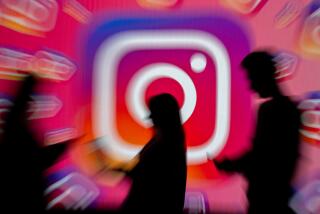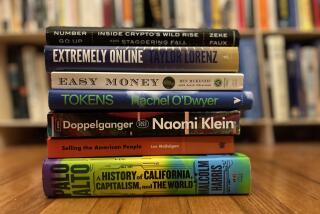Are tablets cutting into e-book sales?
On his blog Rough Type last week, Nicholas Carr addressed the flattening of e-book sales. Citing a report from the Assn. of American Publishers, Carr noted that “in the first quarter of 2013, overall e-book sales in the U.S. trade market grew by just 5 percent over where they were in the same period in 2012.” What this means, he concludes, is that the “explosive growth of the last few years has basically petered out, according to the AAP numbers.”
Carr knows this territory as well as anyone: His 2008 book “The Big Switch” offered an overview of the information revolution, while his 2011 Pulitzer finalist, “The Shallows” (which grew out of an Atlantic Monthly cover story, “Is Google Making Us Stupid?”), argues as succinctly as anything I’ve read that digital media is rewiring our brains. Carr’s concern (which I share) is that a culture of constant grazing, of links and tweets and quick reactions, is affecting our ability to think deeply, to submerge.
And yet, Carr is no Luddite; in 2011, he self-published a collection of essays, “Building Bridges,” as an e-book for the Kindle. This is one of the reasons I trust him, because he is a skeptic who is also involved with the digital world.
Carr has been commenting on e-book sales since the beginning of the year: In January, he wrote a piece for the Wall Street Journal suggesting that, rather than eclipsing print, “[i]t may be that e-books … will ultimately serve a role more like that of audio books — a complement to traditional reading, not a substitute.” His recent post follows up on this argument.
“E-books,” he acknowledges, “are still taking share from printed books, as overall trade sales declined by 4.7 percent in the quarter, but the anemic growth of the electronic market calls into question the strength of the so-called ‘digital revolution’ in the book business.”
Carr cites statistics, which have also been reported elsewhere, that e-book sales seem to have leveled out at “a bit less than 25 percent of total book sales … an impressive share, but … still a long way from dominance,” before referring to “a remarkable new Nielsen report indicating that worldwide e-book sales actually declined slightly in the first quarter from year-earlier levels — something that would have seemed inconceivable a couple of years ago.”
What does this mean? On the most obvious level, that there are no easy answers, that the publishing landscape remains in flux and that the interplay between print and electronic delivery systems is more complex, and more fluid, than the digital boosters would have us believe.
But Carr saves his most interesting conclusion for the end of the post, where he raises the issue of a “possible link between the decline in dedicated e-readers (as multitasking tablets take over) and the softening of e-book sales. Are tablets less conducive to book buying and reading than e-readers were?”
This observation deepens a point he made in his Wall Street Journal piece about the relationship between e-readers and tablets, and the distractions that the latter bring into play. At the time, I thought he was overstating the issue, but now I’m not so sure.
I still do my e-reading on a tablet — I like the brightness of the image, as well as the versatility of the machine. But there’s no question that I read less closely, less immersively … or perhaps it’s more accurate to say that my diversions are always close to hand. This hasn’t had an effect, necessarily, on what (or how much) I download, but it has influenced the quality of my attention, the way that I engage.
Reading, Carr’s data suggest, remains an art of concentration, in which we need to tune out, paradoxically, in order to connect. So why should it surprise us that this would be true, apparently, whether we read ink on paper or pixels on a screen?
ALSO:
The paradox of self-publishing
Used e-books for sale? Not so fast
Public libraries and ‘big six’ publishers fight over e-books
More to Read
Sign up for our Book Club newsletter
Get the latest news, events and more from the Los Angeles Times Book Club, and help us get L.A. reading and talking.
You may occasionally receive promotional content from the Los Angeles Times.







